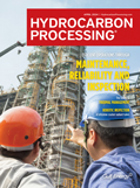Innovations in industrial zeolite mesoporization deliver robust catalytic benefits in hydrocracking
As the key value generator in many established refineries, increasing the output towards desired fractions in a hydrocracker is a major commercial and efficiency driving force. In zeolite-based hydrocracking catalysts, mesoporous faujasites have proven able to yield significantly more middle distillates, at the expense of undesired gas formation. Yet, the industrial adoption of mesoporous faujasites is hampered by costly mesoporization technologies, implying copious amounts of expensive templates, and moreover, significant reductions in catalytic activity, based on losses in intrinsic zeolite properties, such as microporosity and acidity.
Zeopore offers post-synthetic mesoporization technologies which remove these hurdles, offering a superior yield of middle distillates and increased activity as compared to both conventional and state-of-the-art mesoporous zeolites. Recently, Zeopore has finalized a hydrocracking campaign executed on a refinery feed, using base metal catalysts in both sweet and sour mode, attaining middle distillate benefits of up to 4 wt%, which are combined with a gain in activity.
A key component of achieving this success is the quality of the mesoporous zeolite, says Zeopore’s CTO Dr. Danny Verboekend: “Making mesopores in zeolites on itself is actually not that hard… Yet the challenge is to achieve a specific level of mesoporosity, and tuning secondary parameters as a function of the application. In this manner, mesopore quantity and quality are optimized, yielding the true potential of mesoporous zeolites.”
Zeopore has created and extended its knowledge position as to how to relate the acidity and porosity characteristics of the zeolite powder to the hydrocracking performance of the resulting catalyst. Using unique descriptors, the catalytic performance of parent state-of-the-art mesoporous, and Zeopore’s materials can be suitably related, paving the way to guidelines for the design of optimal faujasites for use in hydrocracking.
The benefits of the improved performance are clear, says CEO Kurt Du Mong: “These results yield an impressive 0.5 USD per barrel and $15 MM per cycle extra for an average cracker, making an attractive business case for any refiner. Moreover, reduced lights, lowered hydrogen consumption, and lower reactor temperature, are secondary benefits becoming increasingly valuable, as they positively impact the environmental footprint of the unit.”
Zeopore is currently commercializing its technologies for several applications and will use the obtained insights to maximize the benefits for its customers. The latter is achieved by maximizing the catalytic potential combined with low-cost mesoporization strategies.
The achievements mentioned in this press release have been made possible with the support of Flanders Innovation & Entrepreneurship (VLAIO).








Comments